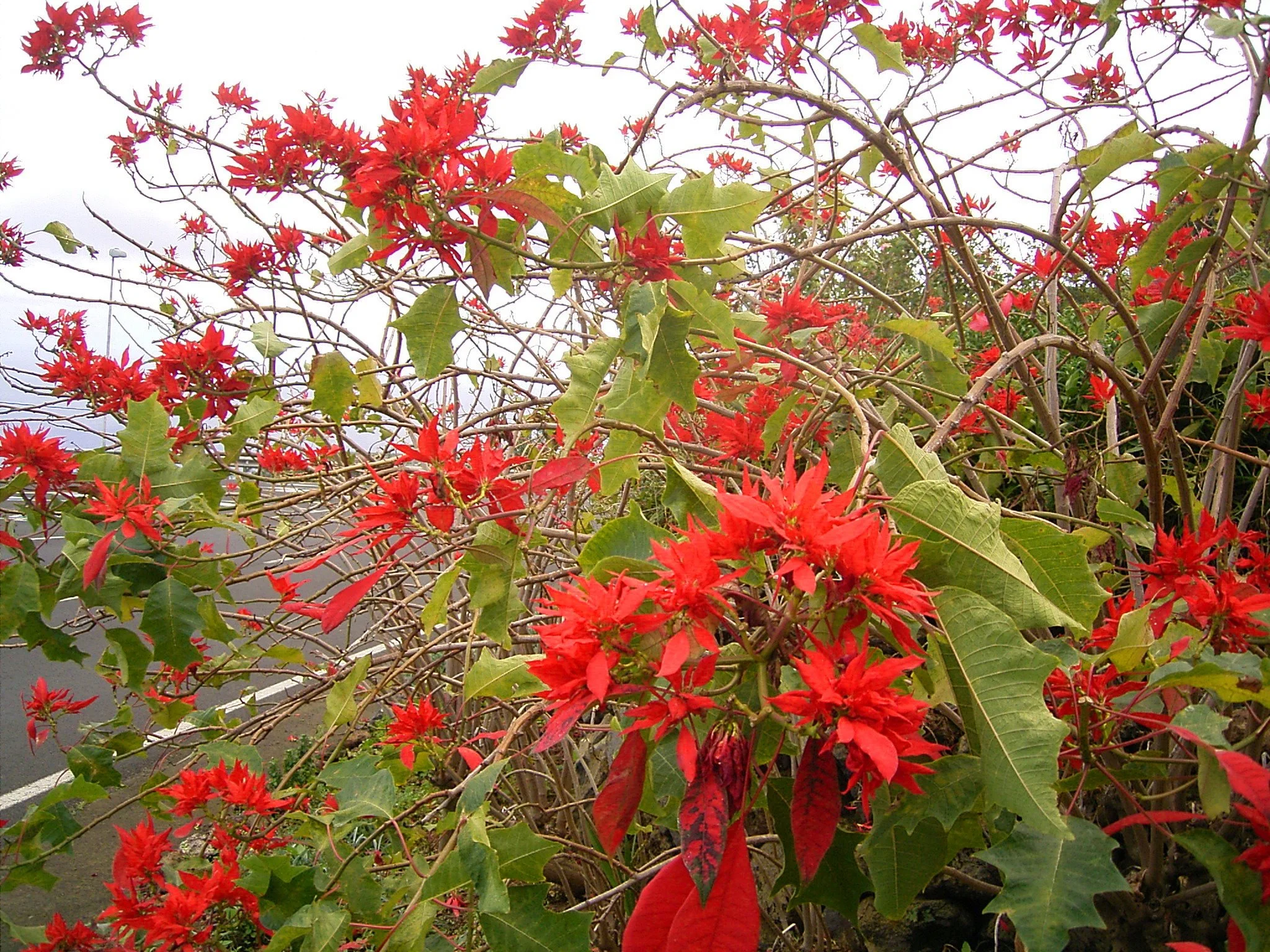Photo by Dinesh Valke licensed under CC BY-SA 2.0
Poinsettias are famous the world over for the splash of color they provide indoor spaces during the colder months of the year. The name "poinsettia" is seemingly synonymous with the holiday season. They are so common that it is all too easy to write them off as another disposable houseplant whose only purpose is to dazzle us with a few short weeks of reds and whites. With all of the focus on those colorful bracts, it is also easy to lose sight of the fact that these plants have wild origins. What exactly is a poinsettia and where do they come from?
Poinsettia is the common name given to a species of shrub known scientifically as Euphorbia pulcherrima. No one quite knows the exact origin of our cultivated house guests but the species itself is native to the mountains of the Pacific slope of Mexico. It is a scraggly shrub that lives in seasonally dry tropical forests. Mature specimens can grow to be so large and lanky that they almost resemble vines. As many of you know, the poinsettias we use to decorate our homes never reach the same sizes as their wild counterparts. The reason for this is because all cultivated poinsettias have been purposely infected with a bacteria that stunts their growth, keeping them small and compact.
Photo by Frank Vincentz licensed under CC BY-SA 3.0
These shrubs flower throughout winter and into spring. What we think of as large, showy, red and white flower petals are not petals at all. They are actually leafy bracts. Like a vast majority of Euphorbia species, E. pulcherrima produces a special type of inflorescence called a cyathium. The flowers themselves are small, yellow, and not much to look at with the naked eye. However, take a hand lens to them and you will reveal rather intriguing little structures. What the flowers lack in showy display is made up for by the colorful bracts, which serve similar functions as petals in that their stunning colors are there to attract potential pollinators.
Those bracts also caught the attention of horticulturists. Because of their beauty, E. pulcherrima is one of the most widely cultivated plants in human history. As many a poinsettia owner has come to realize, the bracts do not stay colored up all year. In fact, the whole function of these bracts is to save energy on flower production by coloring up leaves that are already in place. If they don’t have to produce pigments, they won’t and for much of the year, the bracts are largely green. The key to the color change lies in Earth’s axial tilt.
Photo by Gavin White licensed under CC BY-NC-ND 2.0
As the northern hemisphere begins to tilt away from the sun, days grow shorter. In turn, poinsettia plants begin to mature their flowers. At the same time, changes within the leafy bracts cause them to start producing pigments. When the days become shorter than the nights, the plants go into full reproductive mode. Both red- and white-colored bracts have been found in the wild. As soon as the days start to grow longer than the nights, the plants switch out of reproductive mode and the dazzling color fades. In captivity, this change is mimicked by plunging plants into complete darkness for a minimum of 12 hours per day.
Photo by Kahunapule Michael Johnson licensed under CC BY-NC-SA 2.0
Another aspect worth considering about this species is its sap. Whereas most plants hailing from Euphorbiacea or spurge family contain toxic sap, the sap of E. pulcherrima is very mild in its toxicity and an absurd amount of plant material would have to be consumed to suffer any serious side effects. Certainly it serves an anti-herbivore purpose in the wild, however, as long as you're not a tiny insect or a gluttonous deer, you have nothing to worry about from this species at least. So there you have it, some food for thought if you feel the urge to purge some spurge in a post-holiday cleanse. Condsider keeping these wonderful plants in your home for another year. If you follow their natural daylight cycle, you may just coax some color out of them for many winters to come.




